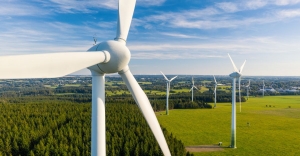In today's rapidly changing world, organizations, governments, and individuals are under increasing pressure to make environmentally responsible choices. Whether it's about reducing carbon emissions, minimizing waste, or making better use of resources, the question remains the same how do we measure the real impact of our decisions? The answer lies in Life Cycle Assessment (LCA), a scientific approach that provides a complete picture of the environmental footprint of a product, service, or process.
This guide aims to help you understand what Life Cycle Assessment is, why it matters, and how it is applied across industries.
What is Life Cycle Assessment?
Life Cycle Assessment (LCA) is a structured method used to evaluate the environmental impacts of a product or service throughout its entire life cycle. This includes everything from raw material extraction, production, and transportation to usage, recycling, and disposal. In other words, it looks at the product's journey “from cradle to grave.”
For example, when analyzing a plastic bottle, an LCA would not only consider the emissions from manufacturing but also the impact of transporting raw materials, the energy consumed while using the bottle, and how it is disposed of at the end of its life.
Why is Life Cycle Assessment Important?
The need for sustainable practices has never been greater. Companies and policymakers are adopting LCA as a tool to:
- Identify environmental hotspots – LCA helps pinpoint which stage of the life cycle contributes most to pollution or resource depletion.
- Support decision-making – It guides businesses in choosing materials, technologies, or processes that reduce impact.
- Improve transparency – With sustainability becoming a consumer demand, LCA data builds trust and credibility.
- Support regulations – Governments and certification bodies increasingly require LCA-based assessments for compliance.
For businesses and organizations working with sustainability experts in India, LCA serves as a benchmark to evaluate environmental responsibility while aligning with global standards.
The Four Stages of Life Cycle Assessment
Conducting an LCA involves a systematic process divided into four key stages:
1. Goal and Scope Definition
At this stage, the purpose of the study is set. Are you analyzing a single product, comparing alternatives, or evaluating a service? The scope defines system boundaries and functional units.
2. Inventory Analysis
This phase involves collecting data on inputs and outputs. For instance, raw materials, energy use, emissions, water consumption, and waste generation are documented in detail.
3. Impact Assessment
The data collected is analyzed to determine potential impacts on categories such as climate change, air quality, human health, and natural resources.
4. Interpretation
Finally, results are reviewed, compared, and presented in a way that supports decision-making. Businesses often use this phase to identify strategies for reducing their environmental footprint.
Applications of Life Cycle Assessment Across Industries
LCA is not limited to one industry. Its applications are vast and diverse:
- Manufacturing: Identifying cleaner production methods and improving energy efficiency.
- Construction: Assessing building materials and designs for eco-friendliness.
- Automotive: Comparing electric vs. conventional vehicles.
- Food Industry: Measuring the footprint of agricultural practices and packaging.
- Fashion: Understanding the sustainability of textiles and supply chains.
For companies partnering with sustainability experts in India, these applications can translate into competitive advantages by demonstrating measurable reductions in environmental impacts.
Benefits of Life Cycle Assessment
Adopting LCA brings several advantages, including:
- Reduced operational costs by optimizing resource use.
- Enhanced brand image through transparent sustainability reporting.
- Compliance with global sustainability regulations and certifications.
- Contribution to long-term goals such as net-zero carbon emissions.
With more organizations embracing climate-conscious strategies, LCA has emerged as a critical tool to bridge business growth with environmental stewardship.
Challenges of Life Cycle Assessment
While LCA is powerful, it comes with challenges:
- Data availability – Accurate and complete data can be difficult to gather.
- Complexity – Large-scale LCAs involve multiple variables and require expertise.
- Cost – Conducting a detailed assessment can be resource-intensive for small businesses.
However, with the growing availability of advanced tools and the guidance of sustainability experts in India, these challenges can be effectively managed.
Conclusion
In a world striving for greener solutions, Life Cycle Assessment stands out as one of the most comprehensive tools for understanding environmental impact. By looking at the entire life cycle of products and services, businesses and policymakers can make smarter choices that align with global sustainability goals.
Whether you are a manufacturer, a service provider, or part of the policy-making community, incorporating LCA into your decision-making processes can pave the way toward a more responsible and efficient future. With the support of sustainability experts in India, organizations can not only comply with regulations but also build a stronger reputation as leaders in environmental stewardship.





